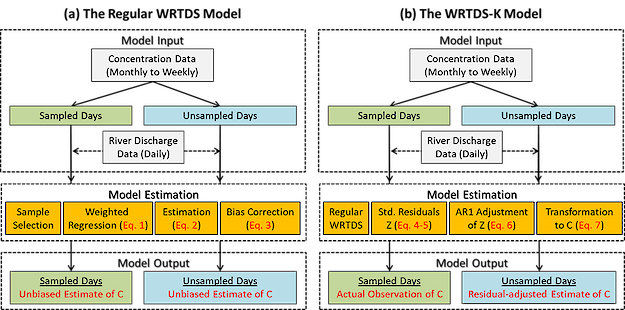Development of the WRTDS-K Method
Development of the WRTDS-K Method
Accurate quantification of riverine water-quality concentration and flux is challenging because monitoring programs typically collect concentration data at lower frequencies than discharge data. Statistical methods are often used to estimate concentration and flux on days without observations. One recently developed approach is the Weighted Regressions on Time, Discharge, and Season (WRTDS), which has been shown to provide among the most accurate estimates compared to other common methods. The main objective of this work was to improve WRTDS estimation by accounting for the autocorrelation structure of model residuals using the first-order autoregressive model (AR1). This modified approach, called WRTDS-Kalman Filter (WRTDS-K), was compared with WRTDS for six constituents including nitrate-plus-nitrite (NOx), total phosphorus, total Kjeldahl nitrogen, soluble reactive phosphorus, suspended sediment, and chloride. The performance of WRTDS-K depends on the AR1 coefficient (ρ) and that relationship varies with constituents and sampling scenarios. Results provided recommendations on the optimal ρ for each constituent and sampling scenario. Overall, WRTDS-K has the potential for broad applications to monitoring records elsewhere, as demonstrated by a pilot application to Chesapeake Bay tributaries.
Key Personnel

Timeframe
- Start: 2017-07-01
- Finish:
- Duration: Ongoing


